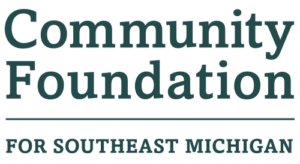Similar, but not the same: Donor-advised funds and private foundations

You and other attorneys, accountants, and financial advisors who work with charitably-inclined individuals and families are familiar with the basics of donor-advised funds and private foundations. Still, it can be challenging to recall the key points and differences during a client meeting when the discussion turns to philanthropy. This overview might help!
Let’s begin with two basics.
First, unlike a private foundation, a donor-advised fund is not a separate legal entity. A donor-advised fund is established underneath the legal umbrella of a community foundation or other 501(c)(3) donor-advised fund sponsoring entity.
Second, donor-advised funds and private foundations are governed under similar but separate rules in the Internal Revenue Code.
Because of these two factors, donor-advised funds and private foundations operate in different ways.
Why are donor-advised funds popular?
Donor-advised funds are popular because they allow a donor to make a tax-deductible transfer of cash or marketable securities that is immediately eligible for a charitable deduction. The donor can recommend gifts to favorite charities from the fund when the time is right. A donor-advised fund operates a lot like a checking or savings account just for charity, and it’s established according to specific IRS guidelines that create tax advantages and govern administration.
Why is it common to choose a donor-advised fund instead of a private foundation?
A donor-advised fund can be an effective alternative to a private foundation, thanks to fewer expenses to establish and maintain, maximum tax benefits (higher AGI limitations and fair market valuation for contributing hard-to-value assets), no excise taxes, and confidentiality (including the ability to grant anonymously to charities).
Why is a donor-advised fund at a community foundation particularly advantageous?
A donor-advised fund at the Community Foundation is frequently a more effective choice than a donor-advised fund offered through a brokerage firm. That’s because, at a community foundation, your client is part of a community of giving and has opportunities to collaborate with other donors who share similar interests. In addition, your clients are supported in strategic grant making, family philanthropy, and opportunities to gain deep knowledge about local issues and nonprofits making a difference.
Are donor-advised funds flexible like private foundations, or are they cookie cutter?
Private foundations will always differ from donor-advised funds in important ways not only because of their status as separate legal entities and the deductibility rules for gifts to these entities, but also because of the opportunities to customize governance. But it is a mistake to think that a donor-advised fund is a cookie cutter vehicle. Indeed, “donor-advised fund” is simply a term used to specify the structure of a fund and its relationship with a sponsoring organization such as a community foundation. The donor-advised fund vehicle itself is extremely flexible.
Private foundations can get pretty big, but are there size limitations on donor-advised funds?
The size of a donor-advised fund, like the size of a private foundation, is unlimited. The United States’ largest private foundations are valued well into the billions of dollars. (Information about private foundations, ironically, is not so private. The Internal Revenue Service provides public access to private foundations’ Form 990 tax returns. That is not the case for individual donor-advised funds.)
Similarly, donor-advised funds are not subject to an upper limit. Although information on the asset size of individual donor-advised funds is not publicly available, anecdotal information indicates that some donor-advised funds’ assets may total in the billions of dollars.
Indeed, a donor-advised fund of any size can be an effective alternative to a private foundation, thanks to fewer expenses to establish and maintain, maximum tax benefits (higher deductibility limitations and fair market valuation for contributing hard-to-value assets), no excise taxes, and confidentiality (including the ability to grant anonymously to charities).
The decision whether to establish a donor-advised fund or a private foundation–or both–is much less of a function of size than it is other factors that are more closely tied to the objectives your client is trying to achieve.
Can a family have both a private foundation and a donor-advised fund?
Many philanthropists and their advisors are aware of the benefits of using both a donor-advised fund and a private foundation to accomplish their charitable goals. Donor-advised funds can help meet the need for anonymity in certain grants, which is typically difficult using a private foundation on its own. A donor-advised fund can receive a family’s gifts of highly-appreciated, nonmarketable assets such as closely-held stock and real estate, and benefit from favorable tax deduction rules not available for gifts to a private foundation. Plus, an integrated donor-advised fund and private foundation approach can help a family balance and diversify its investment and distribution strategies to ensure that giving to important causes remains steady even in market downturns.
Some private foundations are even considering transferring their assets to a donor-advised fund at the Community Foundation to carry on the foundation’s mission. Terminating a private foundation and consolidating giving through a donor-advised fund is sometimes the best alternative for a family when the day-to-day management and administration of the private foundation has become more time-consuming than expected and is taking time and focus away from nonprofits, the community, and making grants. In addition, some families find that the tax rules related to investments, distributions, and “self-dealing” have become harder to navigate and are perhaps even preventing the family from maximizing tax benefits of charitable giving. Finally, the administrative load of managing a private foundation sometimes becomes overwhelming, especially if the family members who handled these functions initially have retired, passed away, or simply become busy with other projects.
This material was developed by Community Foundation for Southeast Michigan. It is published with the understanding that neither the publisher nor the author is engaged in rendering legal, accounting, or other professional services. If legal advice or other expert assistance is required, the services of a professional advisor should be sought.
